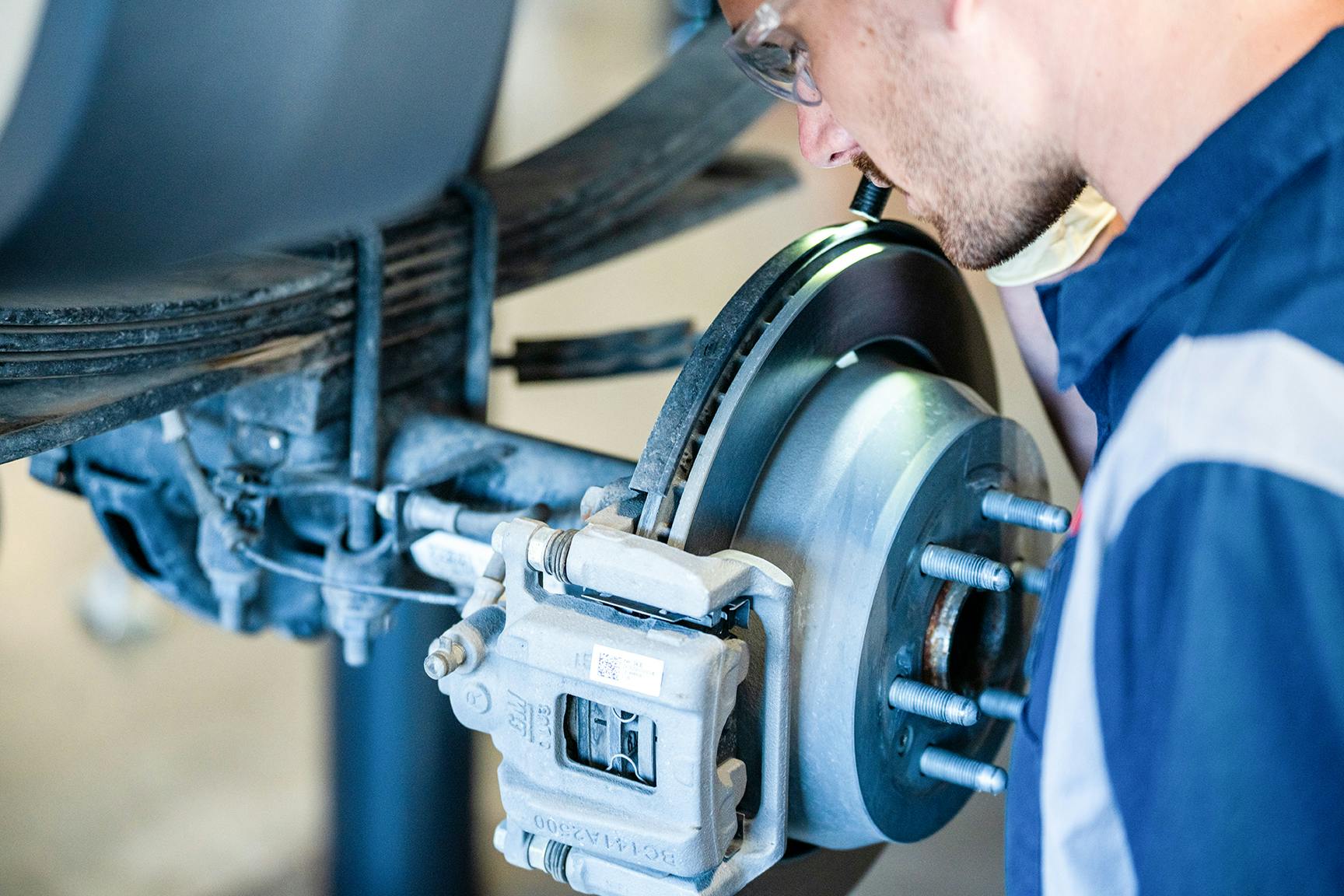When your vehicle is functioning properly, it’s easy to forget how dangerous driving can be. However, it only takes a moment for an important component to malfunction. Suddenly your car has your full attention. One of the worst situations to find yourself in as a driver is to press the brake pedal only to realize that it is not working.
Let’s go over some ways to calmly respond and bring your moving vehicle to a safe stop when your brakes fail.

(Rodrigo dos Reis/Unsplash)
What You Should Do When The Brakes Fail
Remove your foot from the gas.
Once you realize that your brakes are not working, you want to immediately begin the process of slowing down.
If you have time, turn on the hazard lights.
If you still have control of your vehicle and the road is somewhat clear, turn on the hazard lights and honk the horn as a warning to other vehicles around you. Though they may not understand exactly what is going on, it will warn them to not get too close to you as you make your eventual stop.
Start to downshift.
If you are using cruise control, turn it off. Slowly downshift. Moving to a lower gear will help to decrease any momentum.
Pump your brakes fast and hard.
Most vehicles today have dual braking systems that work with the front and back brakes independently. Pumping the brakes may be enough to engage some of the brakes to help slow you to a stop. However, this won’t help if the entire system has failed.
Apply the emergency brake cautiously.
While it won’t bring you to a full halt immediately, it will slow the vehicle down significantly. Stay in full control of the vehicle by engaging the emergency brake carefully.
With the emergency brake engaged, steer your vehicle to the side of the roadway.
If you need to, you may choose to scrape the side of your vehicle on the guard rails or road divider to help slow you down. While it will be a relief to have your vehicle come to a full stop, you will want to avoid putting yourself and others in excessive danger by stopping in the middle of the road.
What to Avoid Doing When the Brakes Fail
Although easier said than done, safely stopping your vehicle in an emergency will require you to stay as calm as you can. Keep these tips in mind:
Don’t panic! The most important thing is to stay calm and not panic.
It is crucial in the first few moments after you realize your predicament to breathe deeply and keep clear-headed. This will keep you and others around you as safe as possible. Don’t make any knee-jerk reactions that will put your life and other lives in immediate peril.
Do not turn your vehicle off.
While this could seem like a logical reaction, it is not a good idea. It will give you less control over the situation, cause skidding, and could disable the power steering or lock your steering wheel. You will need to steer the vehicle off to the side of the road for safety. Keep the car on so that you have some control.
Downshift too quickly.
Although you will downshift, you should move down from fourth gear to first gear gradually. If you downshift immediately then you risk skidding out of control. Remember that you want to stay in control of the vehicle as much as possible during the process of bringing the vehicle to a halt.
Don’t apply the emergency brake prematurely.
Applying the emergency brake is an important step, but you will need to wait until after you downshift and pump the brake pedal before you apply it. You may be tempted to apply the emergency brake immediately when you realize that your brakes are not working. But doing so could cause you to lose control of your vehicle and to skid dangerously.
While having your brakes fail while you are driving down the road is not as common as getting a flat tire, it is always better to cover your bases and be ready in case something bad happens. You don’t want to get caught out on a busy highway and not be at least a little bit prepared to keep yourself and others as safe as possible. Remember to stay calm and follow these tips if your brakes give out.
For more information or for help with winter tires in Utah this winter, check out any of our Burt Brothers tire shops and auto repair shops, where we’ve been helping serve Utah drivers with unbeatable prices and services for a quarter of a century. Visit any of our tire shops along the Wasatch Front from Riverton to Farmington.
Infographic
A malfunctioning vehicle can be a terrifying experience, but it’s important to stay calm and take the right steps to ensure your and your passengers’ safety. One of the most common car issues is brake failure, which can occur for various reasons. Knowing what to do (and not do) when this happens can help you avoid an accident or other dangerous situation. Check out this insightful infographic for help on tackling brake failure with ease.

Video


